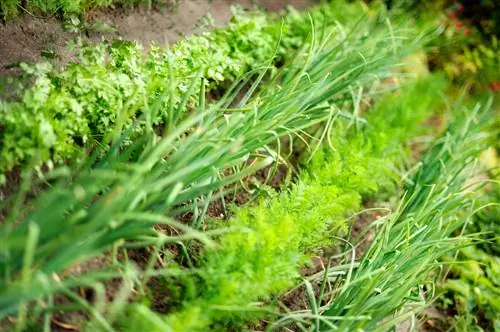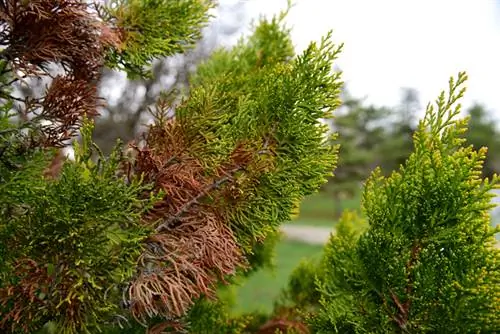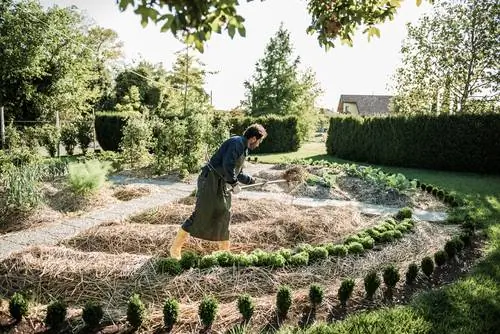- Author admin [email protected].
- Public 2024-01-10 23:11.
- Last modified 2025-01-23 11:21.
Permaculture is ideal for allotment gardens, as the space is used optimally and peripheral areas are included. Maximum yield in a small area - a concept that benefits the allotment garden. Find out more about the characteristics of permaculture and how you can use it in your allotment below.

How does permaculture improve yields in allotment gardens?
Permaculture in allotments optimizes space by using multifunctional elements, perennial crops and native plants. Elimination of chemicals, long-term planning, biodiversity and use of peripheral zones maximize the yield on a small area.
Characteristics of a permaculture garden
- multifunctional elements such as fruit trees (bear fruit, provide shade, falling leaves in autumn serve as mulch)
- perennial crops
- Cultivation of native plants and use of existing plants
- different levels of management of the areas
- Maintain or increase species diversity (mixed culture!)
- absolute avoidance of chemicals
- long-term planning (over several years)
- is mainly used on small areas and is therefore very suitable for allotments or allotments
- Use of peripheral zones
- everything is used, nothing is thrown away
You can read the 12 principles of the permaculture garden in this article.
Permaculture in the allotment garden
Even though it may not seem like it to the untrained eye, there is a lot of planning and a sophisticated system behind a wild-looking permaculture garden. The planning extends not just over one year but over several years. For example, crop rotations are taken into account, raised beds and hill beds are planned and perennial plants are grown. An important point in permaculture is to know and use all existing elements. Therefore, the first priority in the permaculture garden in the allotment is observation:
1. Observation
Get to know your garden thoroughly:
- Which plants and animals occur naturally?
- Which parts are in the shade and where is there a lot of sun?
- Are there slopes or natural height differences?
- Where is the water connection?
2. Planning
Before you start actually planning the planting, you should be clear about your goals: How much fruit and vegetables do you want to harvest? Should animals also be cared for? When should something be harvested? To ensure a continuous harvest, planting must be staggered. Once you have clearly formulated your goals, it's time to sketch: Make a sketch of your garden with the local conditions (buildings, trees, height differences). Then use the sketch to plan how the beds in your allotment should be laid out and where what should be planted. Pay attention to which plants get along with each other and which don't and avoid monocultures.






